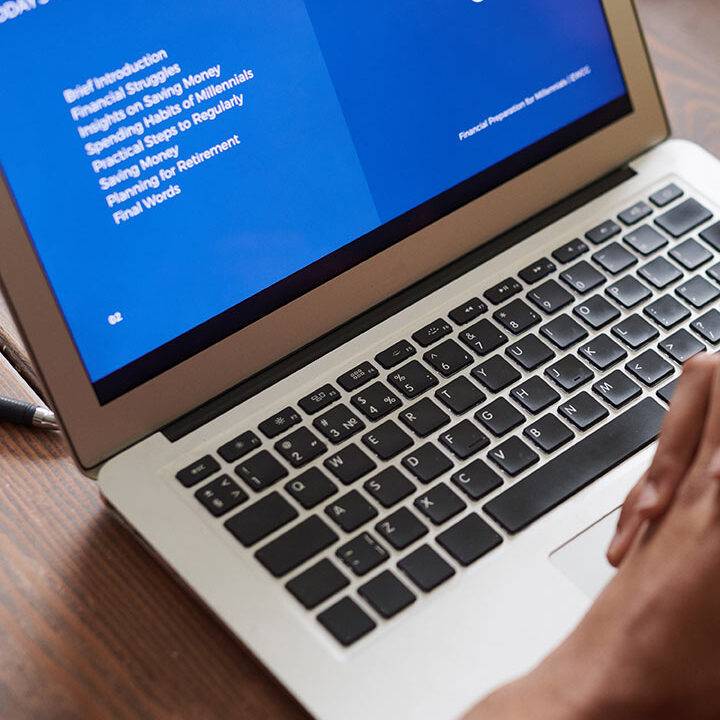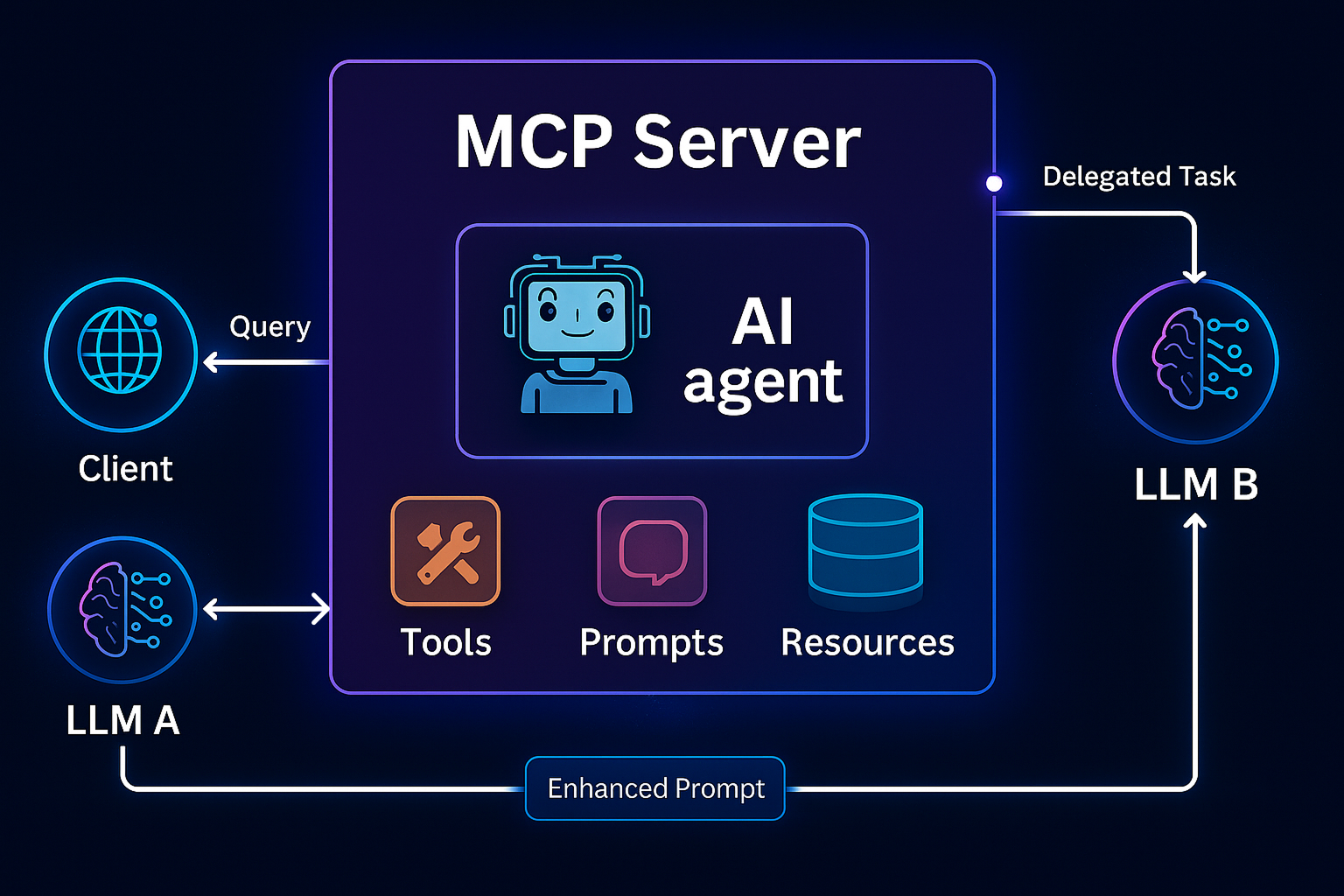The Model Context Protocol (MCP): Revolutionizing How We Connect with AI 🚀
What is MCP?
Imagine a world where all your AI applications can seamlessly connect to various data sources and tools without complex integration work. That’s exactly what the Model Context Protocol (MCP) delivers! 🎯
MCP is an open protocol that standardizes how applications provide context to Large Language Models (LLMs). Think of MCP like a USB-C port for AI applications. 🔌 Just as USB-C provides a standardized way to connect your devices to various peripherals, MCP provides a standardized way to connect AI models to different data sources and tools.
Why Should You Care About MCP? 💡
Whether you’re a developer or an AI enthusiast, MCP solves several critical challenges:
- Flexibility: Switch between different LLM providers without rewriting your integrations.
- Pre-built integrations: Access a growing ecosystem of tools that your LLM can plug into.
- Security: Keep your data secure within your infrastructure.
- Standardization: Follow established best practices for AI integration.
How Does MCP Work?
At its core, MCP follows a client-server architecture where your host application (like Claude Desktop) can connect to multiple servers:
Host (Claude, IDEs, Tools) ⭧ MCP Servers ⭧ Data Sources & Services
This elegant architecture consists of:
- MCP Hosts: Programs like Claude Desktop, IDEs, or other AI tools that want to access data through MCP.
- MCP Clients: Protocol clients that maintain 1:1 connections with servers
- MCP Servers: Lightweight programs that expose specific capabilities through MCP.
- Data Sources: Local files, databases, or remote services that MCP servers can access.
The Power of MCP Components
Resources
Resources expose content to LLMs, enabling them to read from:
- Local documents and files
- Databases
- APIs
- Knowledge bases
Tools
Tools let the LLM take action via the MCP server:
- Write to disk
- Send emails
- Run scripts or database queries
- Trigger remote actions
Prompts
Reusable prompt templates ensure structured and consistent LLM behavior. They can:
- Guide specialized agents
- Chain workflows
- Enable multi-step reasoning
MCP in Practice: AI Sticky Notes with FastMCP
Let’s look at how simple it is to expose tools and resources to LLMs using FastMCP, a Python SDK for building MCP servers.
First, initialize the server:
from mcp.server.fastmcp import FastMCP
from mcp.server.fastmcp import FastMCP
Create Notes
@mcp.tool(description=”Create a new note. Only save. Don’t modify existing notes. Supports emojis.”)
def add_note(message: str) -> str:
# Save message to next available file
Read All Notes
@mcp.tool(description=”Return all notes. Only read them. Do not summarize or edit.”)
def read_notes() -> str:
# Read and return all note contents
Edit a Note
@mcp.tool(description=”Edit an existing note by its number. Only do this when explicitly asked to edit.”)
def edit_note(index: int, new_message: str) -> str:
# Update a specific note by number
Access Notes as Resources
@mcp.resource(“notes://{index}”, description=”Read a specific note by number. Do not modify it.”)
def get_note_by_index(index: int) -> str:
# Return contents of note_{index}.txt
Summarize Notes
@mcp.prompt(description=”Generate a summary prompt of all notes, without changing them.”)
def note_summary_prompt() -> str:
# Format and return a summarization prompt
This compact example shows how you can turn a folder of text files into an AI-powered sticky note assistant with structured context and callable actions.
SDK Options
MCP supports multiple languages with official SDKs:
- Python SDK – Great for AI tools, data apps, and scientific workflows
- JavaScript/TypeScript SDK – Ideal for web applications and Node.js environments
- C# SDK – For developers in the .NET ecosystem
MCP Architecture: How It All Fits Together
The protocol operates on multiple layers:
- Protocol Layer: Handles message framing and communication patterns.
- Transport Layer: Manages actual transport (e.g., stdio, HTTP with SSE).
- Message Types: Defines Requests, Results, Errors, and Notifications.
This layered approach gives MCP flexibility and makes it compatible across platforms and tools.
Getting Started with MCP
No matter your role, MCP has a path for you:
- Server Developers: Build your own MCP server to connect to tools and data.
- Client Developers: Integrate with any MCP server to enable LLM-powered tools.
- Users: Start using pre-built servers with applications like Claude Desktop.
The Future of MCP
As AI continues to evolve, MCP is poised to become the standard interface between models and external data/tools. Its open design supports:
- A growing integration ecosystem.
- Seamless AI interoperability.
- Specialized tool innovation.
- Stronger privacy and control.
Join the MCP Community
MCP is an open protocol with a welcoming community. You can get involved by:
- Building new servers or tools.
- Improving the spec.
- Creating examples or tutorials.
- Reporting issues and suggesting features.
Conclusion
The Model Context Protocol is transforming how we integrate AI into real-world applications. By standardizing context-sharing between models and tools, it removes barriers and opens new frontiers.
Whether you’re building the next generation of AI software or want more power from your assistants, MCP gives you the tools to make it happen.
👉 Ready to explore more? Dive into the official docs, sample projects, or try building your first MCP server today! 🚀
Do you want to know how to overcome privacy concerns while using AI agents? Reach out to us at info@techfrolic.com





